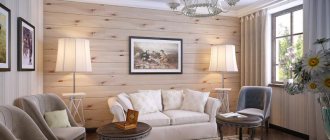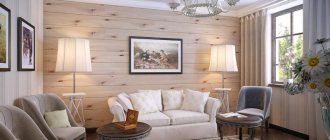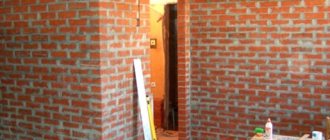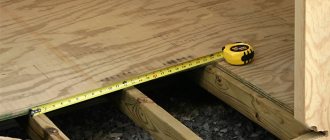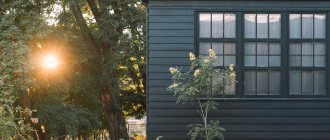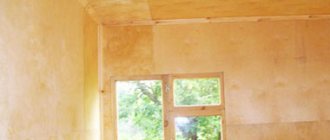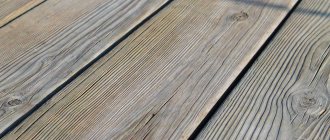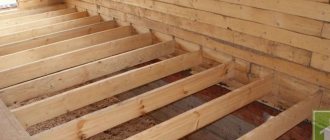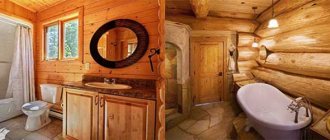The 21st century has arrived a long time ago, and wooden houses do not even think of going out of fashion. More precisely, it’s difficult to call it fashion. Rather, common sense, coupled with a subtle sense of taste, because what other natural material so organically combines environmental safety, reliability and home comfort? True, you won’t be able to escape from the interior decoration (read about how to insulate walls with polystyrene foam from the outside). This is an important component of any construction, and people often have a question: what can inexpensively and beautifully cover the inside of the walls with? Moreover, not every material is suitable for use in a wooden house. We have selected 6 excellent options for you that will definitely help you overcome your doubts and achieve optimal interior design.
- Lining;
- Drywall;
- Cork;
- Decorative rock;
- Plastic;
- Ceramic tile;
- Conclusion.
Lining
- wide selection of shades and textures;
- sound insulation and thermal insulation;
- environmental Safety;
- pleasant appearance;
- basic installation.
- pay attention to the wooden lining
- it is this that brings tangible notes of unique home comfort into the atmosphere and exudes a characteristic pleasant aroma; - the specification of the material should be marked “for interior decoration”
- an important point, since some types of wooden lining are intended exclusively for facade work; - find out the type of wood used before purchasing
- such information is always relevant, since different types of wood behave differently in conditions of high humidity, focus on lining options made of linden, alder, oak if you are planning finishing in a bathroom, bathhouse or kitchen; - The so-called eurolining is also on sale
- this finishing material has improved characteristics, is well ventilated and is practically not subject to swelling even in conditions of constant high humidity, it is more expensive, but it has an impressive appearance and an impressive long service life.
- a frame is assembled from metal profiles or wooden slats;
- sheets of lining are attached to it with clamps or, in the old fashioned way, with nails.
And in this article you can familiarize yourself with step-by-step instructions for installing lining.
Principles of budget finishing
To renovate rooms, large investments are not necessary; even a family with a modest budget can make their own, interesting decoration of interior walls. There are many beautiful, high-quality finishing materials at affordable prices on the construction market.
Recommendations from experts on carrying out economical repairs will help apartment owners aesthetically decorate the design of an apartment or house. Their advice will be useful to anyone who is doing a simple restoration or renovation with minimal investment, but does not want to lose the beauty of the rooms.
- Draw up a repair plan and estimate, choosing the available options. Purchasing finishing and auxiliary materials is an important stage of repair. Focus on technical, environmental, properties of building materials, their picturesqueness. Select installation method.
- Refuse to update additional space: loggias, balconies, storage rooms.
- Do the dismantling yourself, this is important for secondary housing, when moving partitions.
- Do not start complex designs on wall planes, do not make niches or partitions.
- When buying wallpaper, choose vinyl options without a pattern; in this case, you can avoid the costs of combining patterns and trimming, plastering the walls; you will only need to putty the areas, joints, and corners.
- Shop for building materials in large chain stores.
Drywall
- helps hide utility lines;
- allows you to achieve a perfectly flat wall surface;
- absorbs moisture well;
- possibility of non-linear editing.
You should also be careful when purchasing drywall in a store. You should start from the characteristics of the room in which the cladding is planned. If you have to deal with a permanently damp place, it is best to choose moisture-resistant gypsum board sheets
.
They are usually available in blue or green. For rooms with high temperatures and a certain risk of fire, pink
drywall is suitable - it has a reliable fire-resistant coating that will help protect your walls from unpleasant surprises.
One of the advantages of covering walls with plasterboard in a wooden house is that it is easy to install.
Thanks to the dimensional sheets, the cladding can be completed quite quickly. True, you will first have to build a sheathing
- this is an improvised frame made of metal profiles or wooden beams.
It can successfully hide all sewer and ventilation communications, cables that spoil the appearance of the room. After the gypsum board sheets have been attached, all that remains is to treat them with a primer, seal all the seams with serpyanka, thoroughly putty all the defects and paint or whitewash them in the color that fits into the format of your interior. An important point that I would like to pay close attention to: new wooden houses tend to shrink after some time, so it is recommended to cover them with plasterboard only after this. In this case, it is necessary to leave 1-2 cm
at the junction with the floor and ceiling, since wooden walls tend to swell - and one day the cladding may simply tear. Video with recommendations from experts.
Preliminary work
Slight curvature of the walls and small defects can be removed with ordinary plaster.
Plasterboard sheets will help to cope with significant problems, but they will “eat up” the space of the room, so this method of leveling walls is not recommended in small rooms.
Sheathing with plasterboard and finishing with plaster will require additional finishing putty.
Cork
- 100% environmentally friendly;
- excellent sound insulation;
- magnificent relief;
- solid and expensive look.
This is the case when the obvious visual advantages of a cork correlate with its technical characteristics and the numbers on the price tag. This option is certainly suitable for a respectably furnished wooden house, in which a lot of money has been invested. If you plan to cover the walls inexpensively, then you can use a little trick - use cork to decorate individual wall fragments. In this case, the costs will not be so high - and nothing will interfere with the pleasure of contemplating the spectacular wall cladding in the house.
It is better to glue cork to a wall in a wooden house using special contact glue. It grips the sheet perfectly even with low consumption. Of course, before this it is necessary to prepare the surface of the wall itself:
- remove irregularities;
- clean from dust and debris;
- remove any remaining old material.
It is best to thoroughly level the walls before doing this, but if you don’t really want to do this with plaster, then gypsum board sheets will be an excellent and, most importantly, inexpensive alternative.
painting
Artistic painting will perfectly decorate any room; it will look especially good in spacious rooms. For this design, you can use any paint. It would be nice to have artistic skills.
For those who do not have experience, special stencils will be useful. You can purchase them at craft stores, make them yourself from thick cardboard, or use natural materials such as leaves. Most often, such designs are applied using the paint blotting method.
Applique is often used as a type of painting. You can make it by printing a template on a printer or drawing it yourself.
Decorative rock
- creates a beautiful natural look;
- favorably emphasizes the relief of noble stones;
- undergoes final finishing.
One of the advantages of using decorative stone for interior wall cladding in a wooden house is the low cost of the base material. As a rule, this is gypsum, but there are also options combined with cement. The latter, as a rule, are a little heavier, but in any case much more convenient for cladding than “wild” stone.
The only downside is the increased demands of this cladding material on the wall surface. It must be perfectly smooth, otherwise the created relief will not be so expressive. In order to cover the walls with decorative stone, it is best to use tile adhesive or liquid nails. The first option is recommended if the cladding material is made on the basis of a weighted mixture of gypsum and cement, the second - for cladding based on lightweight gypsum that is convenient for cladding.
Other ideas
The prepared walls can be beautifully decorated with regular or modular paintings, photographs, and collages.
Photos of walls decorated with your own hands will give you interesting ideas for decoration.
Plastic
- attractive appearance;
- modest cost;
- excellent moisture resistance;
- unpretentious care.
People's love for plastic is as imperishable as their love for wood. What if it turns out to be correctly combined in one room? Due to its good moisture resistance, plastic can be successfully used for inexpensive and reliable interior decoration of walls in the bathroom, toilets and kitchen in a wooden house. In order to properly frame the walls, you will have to build the usual frame - such sheathing will allow you to achieve a perfectly flat surface.
If previously the choice of plastic for wall coverings was quite modest, now you can choose sheets with a wide variety of textures and colors. There are also beautiful relief models, which in some rooms of your house can fit perfectly into the simulated interior.
Ceramic tile
- reliable and inexpensive;
- suitable option for bathrooms and toilets;
- complex installation.
Another good answer to the question of how you can inexpensively and beautifully cover the walls of your home, if it is made of wood. Good - in terms of material costs and the final decorative effect. However, in order to lay the tiles evenly and correctly, you cannot do without special skills. Still, good specialists are worth it.
The tiles are glued to the base surface using tile adhesive, and after direct cladding, the seams are sealed with fugue - a special grout that prevents the appearance of pathogenic flora on the walls of a wooden house and, at the same time, by adding various dyes, also helps to emphasize certain shades in the interior.
Old wooden house
When performing work inside an old building, it is necessary to first assess the condition of the walls and carry out a set of protective measures. All suspicious areas on the walls are checked for strength. To do this, you can use a screwdriver, knife or chisel. Areas with the following features are considered suspicious:
- darker than the main surface;
- lighter than the main surface;
- different texture;
- different density.
If the wood crumbles, it is recommended to contact a specialist who, depending on the nature and extent of the damage, will advise the further course of action. Even if there are no defects on the surface, it is necessary to treat the base with an antiseptic.
